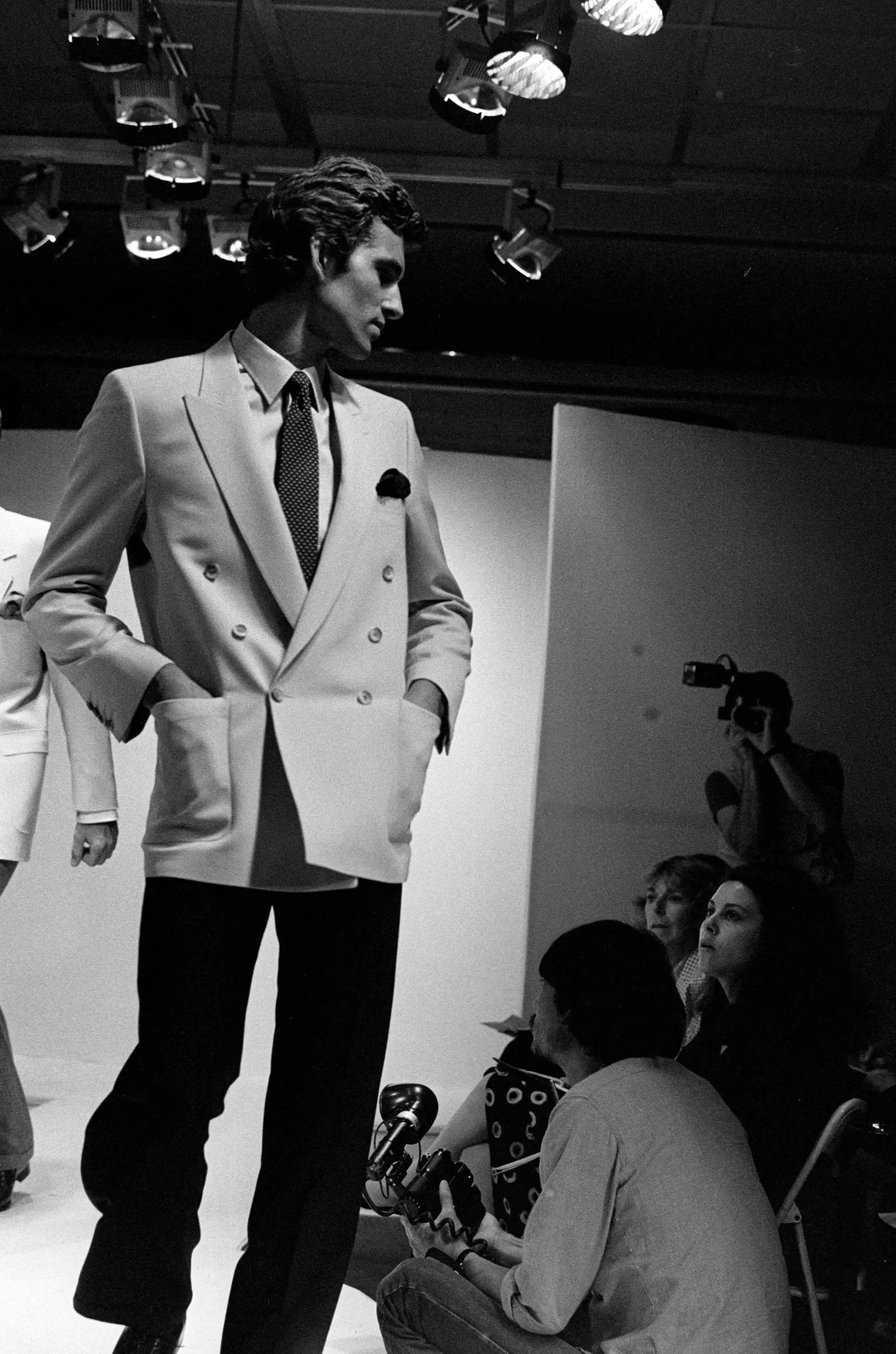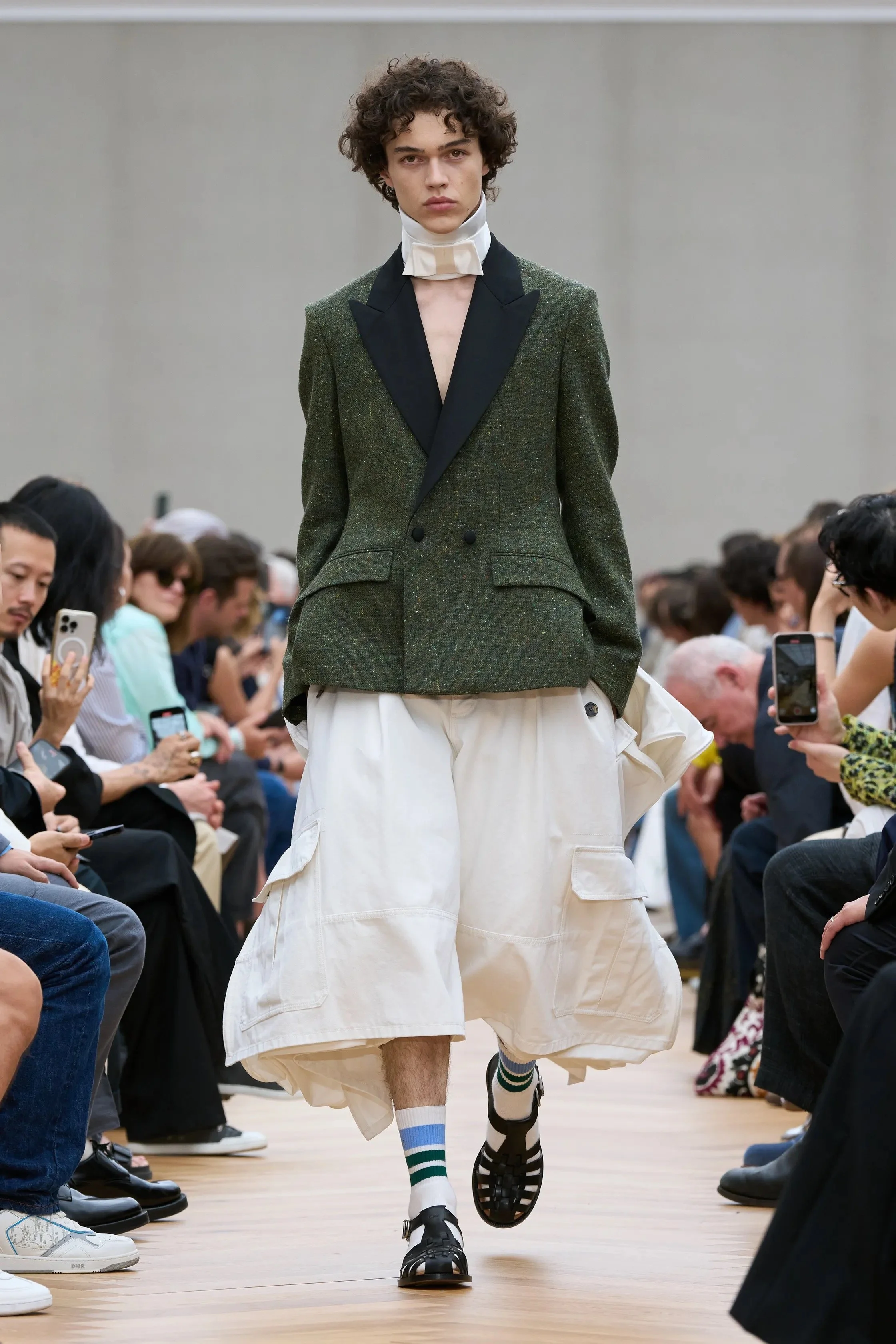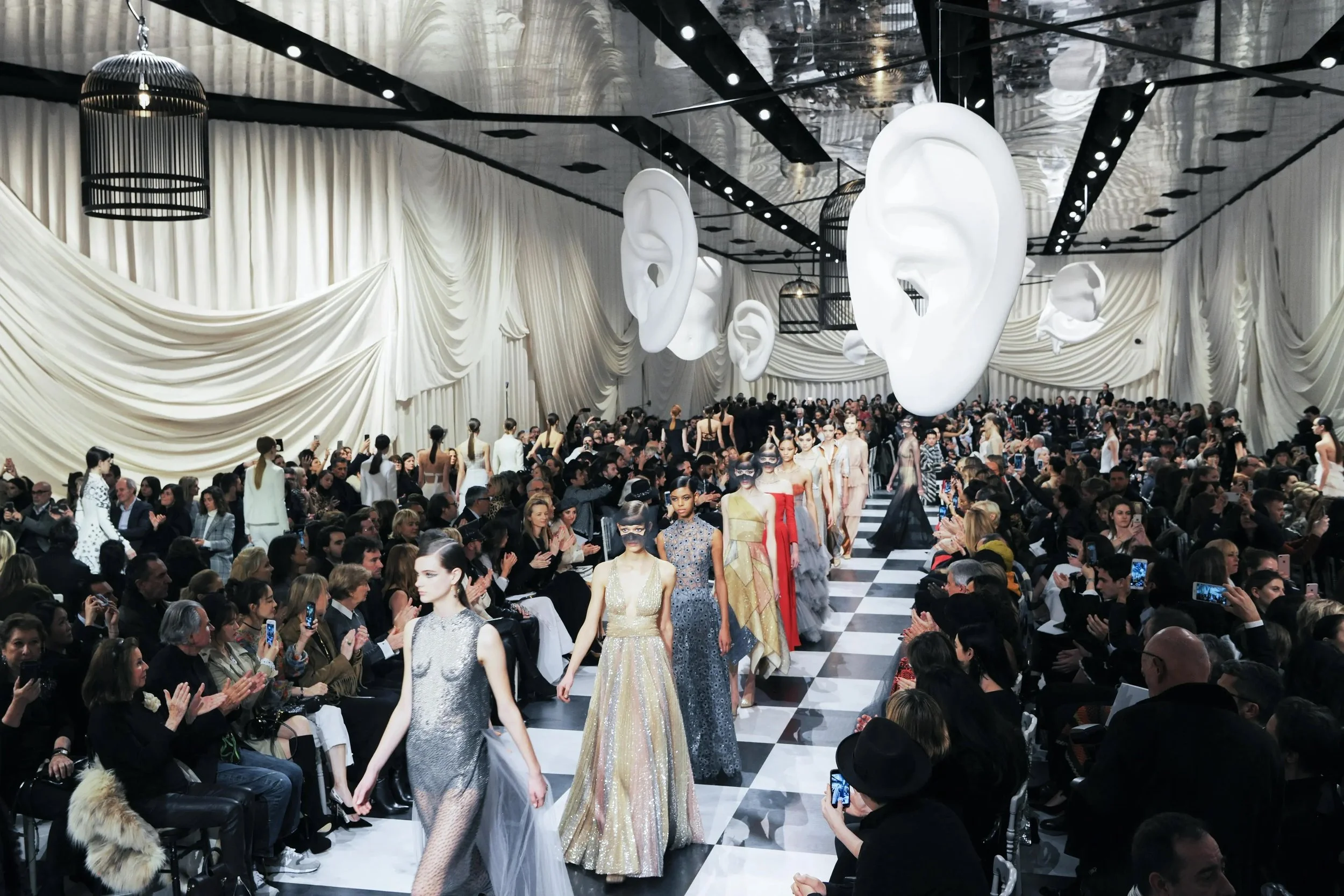The Illusion of Freedom: Why Menswear Still Plays by the Rules
Saint Laurent Rive Gauche; Credit: Alber Elbaz
The Illusion of Freedom: Why Menswear Still Plays by the Rules
The dance between freedom and control in fashion is ongoing — and it’s far from equal. Menswear can flirt with softness or absurdity, but it is still expected to remain legible, anchored in some version of seriousness. Womenswear can slip into spectacle, but that spectacle often becomes an obligation, a demand to stay endlessly interesting. Fashion keeps circling this question, never quite answering it. Are these boundaries finally breaking, or just learning to hide behind prettier fabrics?
This summer’s Paris Fashion Week seemed to lift — even unearth — the roots of men’s fashion, in a way that felt both classical and unapologetically modern. Flowing capes balanced by structured silhouettes; a kind of playfulness layered over a certain masculinity. Here, the idea of masculinity takes shape as a visual language embodied in shapes, contours and cultural codes. It's a performance, woven into tailoring, proportions, and even the quiet authority of a well-cut suit.
This is something Jonathan Anderson managed to distill into Dior’s 2025 menswear collection: that mesmerising balance between femininity and manliness, transforming the show into something less about performative spectacle and more like a quiet wink at the brand’s forgotten cultural heritage. In doing so, Anderson carves his place within a trajectory shaped by names like Alessandro Michele and Hedi Slimane — designers who, each in their own way, have spent years reshaping the visual codes of men’s couture.
Yet beneath all those layered folds and subtle nods, gender expectations draw a clear, unyielding outline. Logo-etched ties, tailored pieces - a renaissance spirit infused with early 90s boyish streetwear. This tension — between fresh gestures and old codes — reveals the boundaries that still shape menswear’s performance.
The Mask of Masculinity
Over history, the idea of menswear has been defined in quite different ways, though almost every fashion house has, in some way, bent to the patterns and politics of its century. Perhaps unsurprisingly, most menswear on the market today still often ends up split between unisex and strictly men’s. A clear divide. Where womenswear stretches its boundaries, speaks five visual languages at once, breaks its own rules before the runway’s even cooled — menswear stays legible, anchored to the same familiar outline.
Christian Dior Monsieur, spring 1982; Credit: Fairchild Archive/Getty Images
But even within those outlines, subtle shifts emerge. Dior’s signature Bar Jacket strode the runway with deliberate honour — paired with billowing shorts, it blossomed into a bolder, unapologetically feminine gesture, both signature and refreshingly new. “Through constraint, you find newness,” Anderson said.
Dior Men SPRING 2026 MENSWEAR; Credit: Daniele Oberrauch / Gorunway.com
Dior Men SPRING 2026 MENSWEAR; Credit: Courtesy of Dior
Even at their boldest, there is still a kind of invisible boundary that designers rarely cross — reassuring the viewer that this is innovation, but never chaos. Proportions stretch wider, fabrics soften unexpectedly, yet the shape remains familiar. The look still signals a coherent version of masculinity: intentional, slightly softened but never truly unmoored.
This is what makes it legible — easy to read as a deliberate statement rather than a loss of control. It defines menswear’s limits and exposes the quiet double standards still governing fashion. Because while womenswear has learned to thrive in spectacle, men’s fashion is still expected to colour inside the lines — no matter how softly they shimmer.
Theatre and Threat
But if menswear finds safety in restraint, womenswear finds peril in endless reinvention. At Dior especially, fashion becomes fantasy, art becomes theatre, and surrealism becomes part of the language.
Back in 2018, under Maria Grazia Chiuri, haute couture transformed into something almost dreamlike: a majestic live exhibition where fashion blurred into surrealist art. Inspired by the worlds of Leonor Fini, Lee Miller, Meret Oppenheim and so many others, Chiuri reinterpreted their imagery into a mesmerising blend of Renaissance references and modernist details — just like Jonathan Anderson, she repeated and reinvented symbols from the past so they could walk with new meaning.
Christian Dior Haute Couture Spring 2018; Credit: Courtesy of Dior
At the time, audiences seemed more at ease with this kind of deliberate eccentricity. Chiuri’s vision, all heavy embellishment, was celebrated — until it wasn’t. The same gestures that once felt bold began to feel predictable. The more she leaned into grandeur, the quicker the applause faded.
For centuries, men’s clothing was anchored to notions of functionality and pragmatism, while women’s was permitted to orbit around decoration, fantasy, ornamentation. As a result, there is a much greater tolerance for avant-garde designs in womenswear, which are usually celebrated as artistic statements or social commentary. Meanwhile, similar gestures in menswear are more likely to be dismissed as ridiculous or attention-seeking.
But this freedom for women is complicated — sometimes a cage disguised as choice, a demand to perform spectacle endlessly. And when men attempt to shatter their own constraints, to break the script completely, the reaction can be sharp and unforgiving.
When Menswear Breaks the Script
What happens when menswear dares to claim the same freedom — to be theatrical, unserious, strange?
Jared Leto’s Met Gala appearances have exposed the cost of stepping beyond the script — lauded by some, ridiculed by others. His style, hovering between ironic costume and genuine disruption, reveals how quickly the line between innovation and mockery can be crossed.
It’s in these moments — the mask slipping, the audience flinching — that the rules reassert themselves most brutally. Watching this play out from both sides, we witness how menswear’s freedom is both tested and tethered, always balancing on the edge between transformation and tradition.
Freedom’s Performance
These boundaries are not dissolving. They are adapting, learning to camouflage. Fabrics gleam, silhouettes soften, but the shape remains unshaken. Designers push the edges, always just enough to stay readable, familiar, safe. Meanwhile, womenswear spins wildly in the opposite direction — gifted the license to shock, only to be trapped by the very spectacle it creates. The eccentric is celebrated, devoured, then tossed aside without a second thought.
Fashion never shatters its rules, it repackages them. And as long as the performance must be understood — classified, justified, merchandised — freedom will stay exactly what it is now: a beautifully convincing illusion.




